FS Colour Series: Mecca Orange inspired by Andre Derain’s Scorching Sunlight
MECCA ORANGE linen is backlit with scorching heat, recalling French Fauvist Andre Derain’s glowing, sun streaked landscapes. He was intoxicated with the golden light in the South of France, painting it with heightened colours that seem to buzz with the electrifying energy of life. Looking back on the frenetic brushstrokes and dazzling colours of Fauvism that defined his career he wrote, “Fauvism was our ordeal by fire… colours became charges of dynamite. They were expected to discharge light…”
Derain grew up near Paris and spent his much of his early career in the City of Lights. But when he visited the coastal town of Collioure with his friend Henri Matisse, Derain was entranced by the luminous sun that transformed every colour into a glowing, sparkling ember. His canvases became riotous and explosive, with crude colours slapped across their surfaces in flattened, naively expressive strands, prompting the term Les Fauves, or the “Wild Beasts” from art critic Louis Vauxcelles later that same year. Bateaux a Collioure, 1905 and The Roofs of Collioure, 1905 capture dry, blanched earth and sun soaked rooftops with deep terracotta and tangerine hues that seem to ripple and flicker in the hot sunlight, vibrating against cool, watery blues. Reflecting back on this career defining moment in time with Matisse at Collioure, Derain wrote, “We became intoxicated with colour, with words that speak of colour, and with the sun that makes colours brighter.”
Several months later Derain was commissioned by art dealer Ambroise Vollard to create a series of paintings in London. Over a two month period Derain painted a series of city views from life, transforming the grey, industrial city into a feast of colour and light as if still dreaming of the Southern French coast. In Charing Cross Bridge, 1906, Thames water is reimagined as a flat sea of red and orange, surrounded by a rainbow palette of green, yellow and blue that glimmers and weaves into broken, moving abstract patterns.
In the following years Derain explored wider regions in the south of France during the summer months. In 1906 he spent time painting in L’Estaque, following in the footsteps of his great predecessor Paul Cezanne, hoping to find the same entrancing unspoilt idylls – like Cezanne, Derain sought in nature, “something different – something which is fixed, eternal and complex.” There Derain produced one of his most iconic works of art, The Turning Road, L’Estaque, 1906, where trees become blazing flames of colour, burning orange, red and yellow in the intense hot sunlight, offset by deep indigo patches of cool shadow. “The substance of painting is light,” reflected Derain as he lost himself in the sun drenched landscape.
A year later Derain moved on to Cassis, painting scenery with deep, zesty oranges and cool greens that conjure up the lush warm vegetation of the Mediterranean coast. In Landscape at Cassis, 1907, hot sunlight catches roof slates and dry paths before falling into dark green leafy shadows and cold, icy blue water beyond. Visiting Martigues in the Summer of 1908, Derain’s paintings became increasingly geometric and sculptural, revealing the continuing influence of Cezanne. Finding a freedom in the isolated wilderness, he wrote to his friend and fellow Fauve Maurice de Vlaminck, “I believe that here is the only place where all one has are the sensations of a painter.” In The Bay of Martigues, 1908 hot sunlight falls onto the foreground and rooftops and nearly engulfs the entire canvas. Black silhouettes and electric blue water vibrate against zingy orange, making the whole canvas hum with the musical resonance of summer.





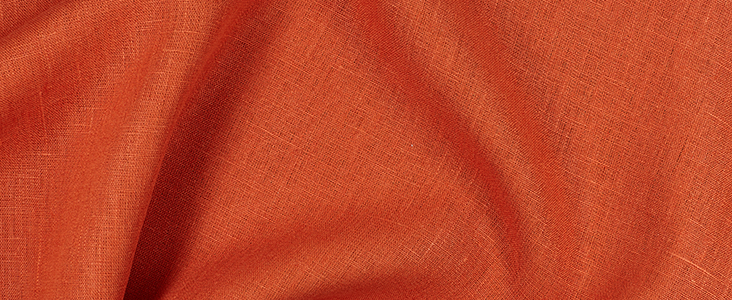
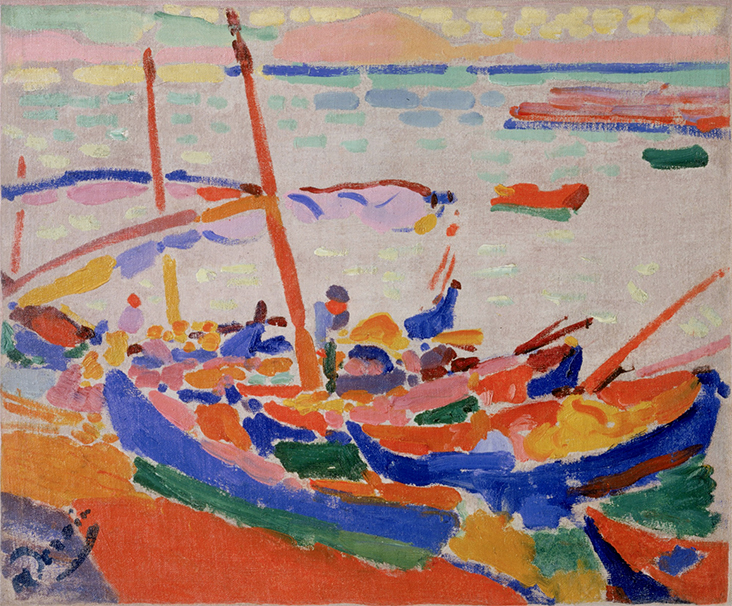
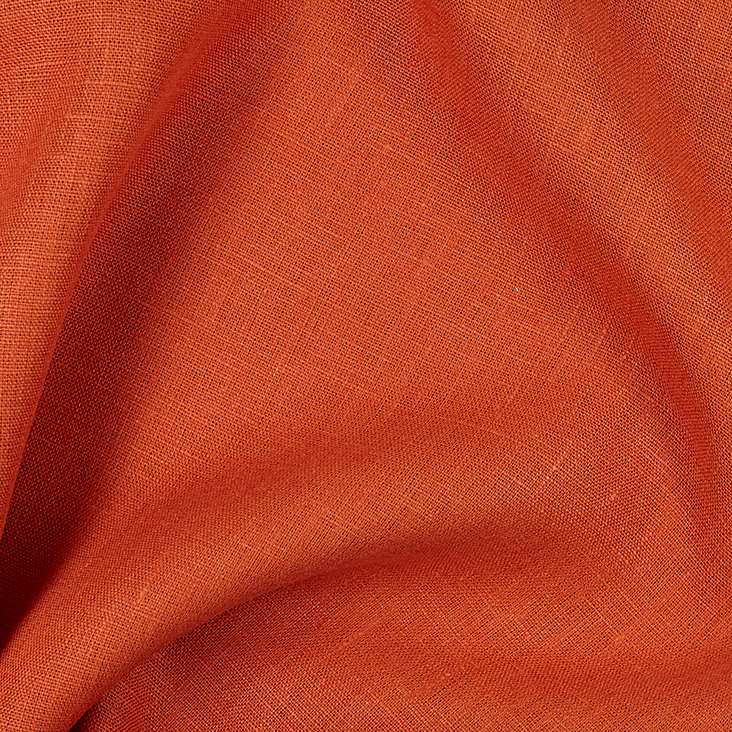
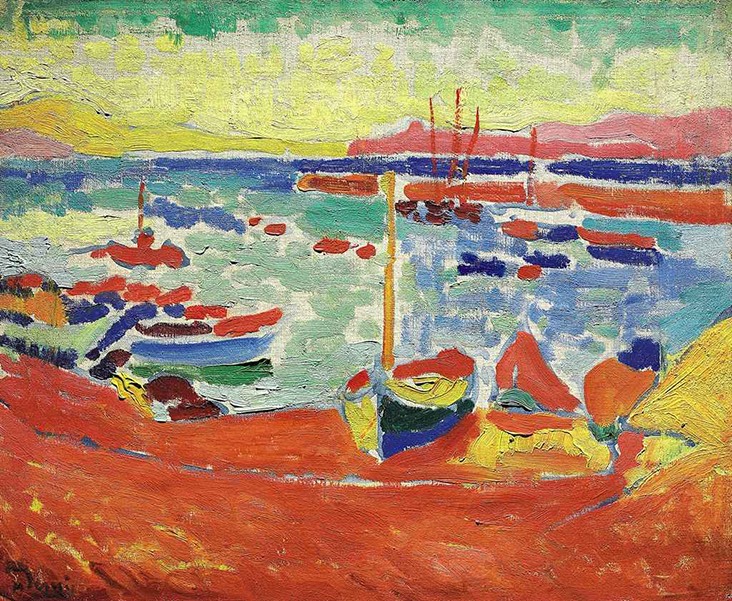
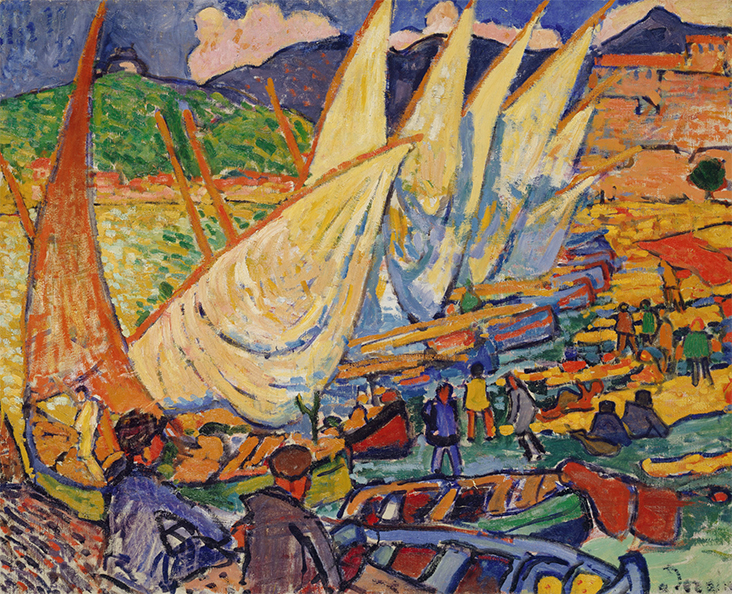
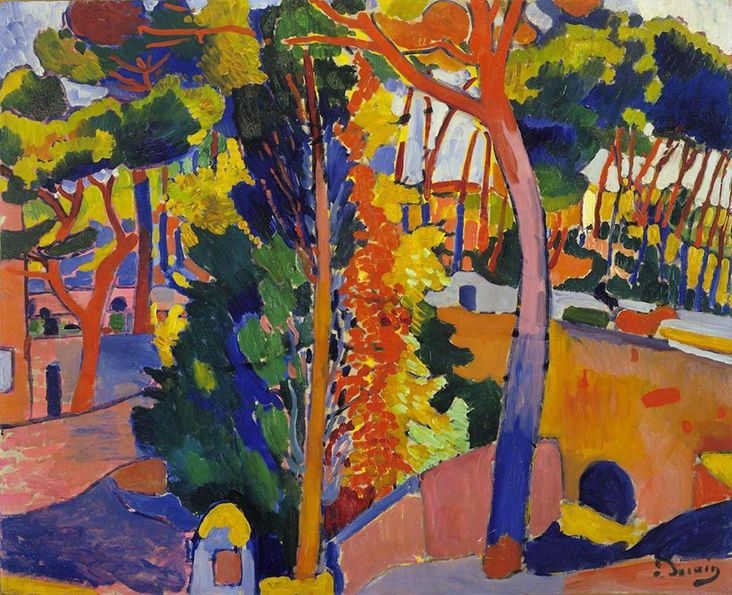
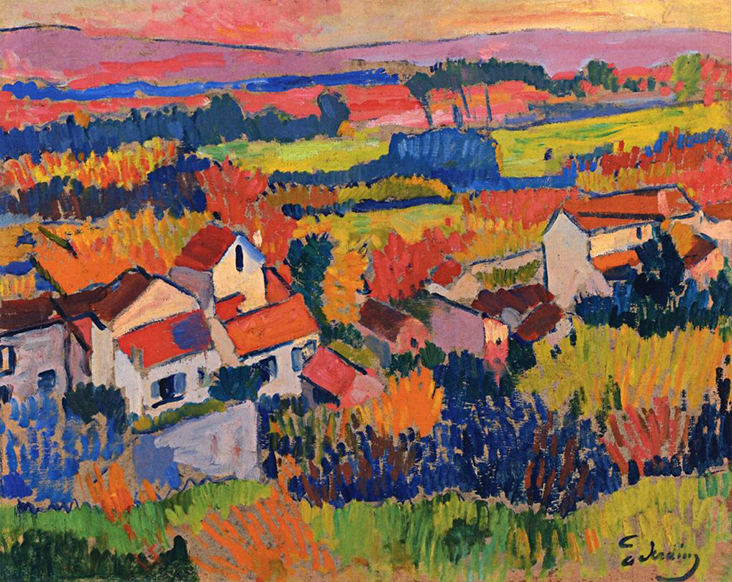
















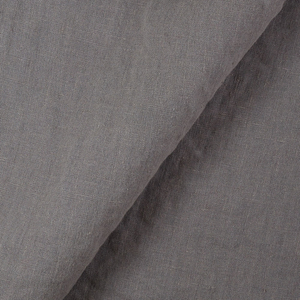


























One Comment
Elaine Rutledge
Beautiful! I want so bad to order some of these beautiful colors…and my husband reminds me of the fabric and dye supplies sitting in my sewing room. No fear – that stuff will be used up in no time.